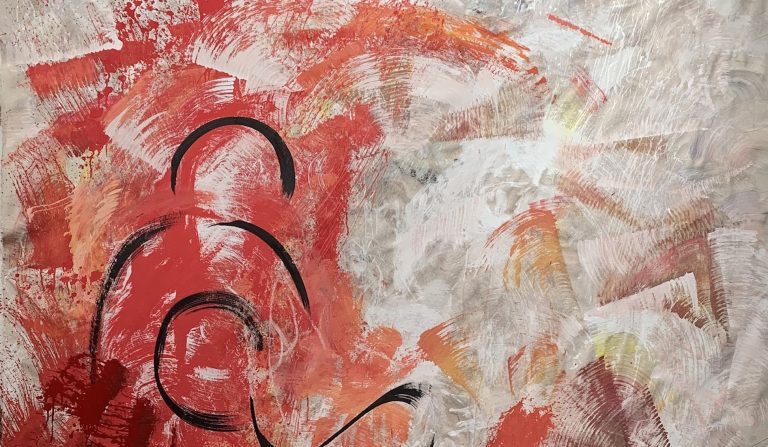Carolin Rechberg, born in Starnberg, Germany, is a multidisciplinary Fine Artist whose work spans a broad spectrum of mediums. From ceramics to sound art, from drawing to voice work, her creative approach places value on the multi-sensory experience of making art. For Rechberg, the act of creation is more than a process—it is a way of being. She views her artistic practice as a channel for presence, reflection, and transformation, an ongoing dialogue between the self, the material, and the surrounding world. Rechberg describes art as a way to “digest, reflect, and transform information,” emphasizing that the process itself holds as much importance as the final product. Her philosophy infuses her work with a quiet yet profound intensity, encouraging viewers to engage deeply with both the material and the intangible.

Rechberg’s practice revolves around exploring the relationship between the individual and the broader systems of life. She approaches art as a tool for heightened awareness, both of herself and the external world. Each artwork is an inquiry into presence—what it means to fully engage with a moment, to allow it to unfold without resistance. This philosophy manifests across her vast repertoire, whether through tactile ceramics, ethereal soundscapes, or the expansive energy of her paintings.
One of her pieces, Finding Stillness in the Inner Chaos (2021), exemplifies this ethos. The large-scale painting, measuring 203 x 304 cm, combines gesso, ink, and tempera on raw canvas. Its textured surface and fluid composition invite the viewer into a meditative experience, reflecting the dualities of calm and turbulence. Rechberg’s use of raw canvas emphasizes the organic and unfiltered, mirroring the rawness of human experience. Her choice of materials, often grounded in natural pigments and traditional techniques, reinforces her connection to the elemental and timeless.
Her artistic philosophy extends beyond the work itself. Rechberg sees art as a “means to harness a state of alert awareness,” a practice that not only shapes her creative output but also informs her daily life. To her, art and existence are inextricably linked. The process of making becomes a way of being, a lens through which she navigates the world.
Rechberg’s interdisciplinary approach allows her to weave together diverse mediums and methods. For her, the boundaries between disciplines are porous, allowing for fluidity and cross-pollination. Her installations often incorporate elements of sculpture, sound, and performance, creating immersive environments that engage multiple senses. These works invite viewers to participate in the act of creation, fostering a shared sense of presence.
In her poetry and voice work, Rechberg delves into the sonic and linguistic dimensions of expression. Words become a form of texture, rhythm, and resonance, bridging the gap between the tangible and the ephemeral. Similarly, her textile designs and printmaking explore the interplay between form and function, aesthetics and utility. Each medium offers a unique avenue for exploring her central questions: How do we relate to ourselves and to others? How can art deepen that connection?
While her work spans a range of styles and techniques, Rechberg maintains a consistent focus on process and presence. She sees the act of making as an iterative journey, each piece contributing to a larger vocabulary of ideas and expressions. This cumulative approach allows her to continually refine her understanding of art, culture, and nature. Each artwork becomes a stepping stone, a momentary marker on an ever-evolving path.
The scale of Rechberg’s work is as varied as her mediums. Pieces like Finding Stillness in the Inner Chaos command attention with their sheer physicality, while her smaller, more intimate creations draw viewers into quiet contemplation. This balance of grandeur and subtlety reflects the dualities at the heart of her practice—chaos and stillness, individuality and universality, process and result.
Rechberg’s commitment to the sensory experience of art extends to her audience. While her works are deeply personal, they also invite others to engage with their own presence and perception. By creating spaces for reflection, she encourages viewers to explore their relationship with the material and the immaterial, the self and the other.
Ultimately, Carolin Rechberg’s art is about more than creating objects—it’s about cultivating a way of life. Her practice invites us to slow down, to look deeply, and to reconnect with the present moment. Through her work, she offers a glimpse into a state of heightened awareness, where the act of making and the act of being become one and the same. Rechberg’s art reminds us that creativity is not just about what we produce but about how we live, how we see, and how we connect with the world around us.

